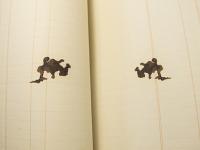When I began working on the Bank of North America collection in August, I was pleasantly surprised by the prevalence of ink blots within the ledgers I was cleaning and consolidating. As I collected these dark, obscure visions, I began to see them as evidence of the original bank clerk’s humanity – his unavoidable errs in writing and his inability to produce a completely perfect manuscript despite the obvious mastery of his writing implement.
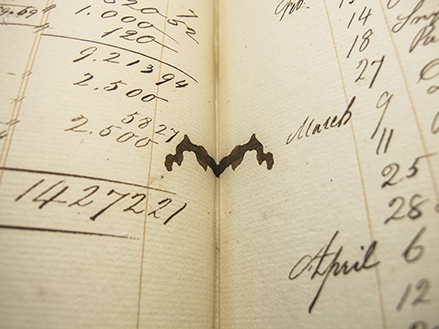
This humanity allows the ledger to be not only a record of account information, but a bridge across space and time. I, and any researcher who may page the volume upon completion of the project, am a direct witness to an occurrence of two hundred years ago, when a bank clerk lost control of the flow of his ink.
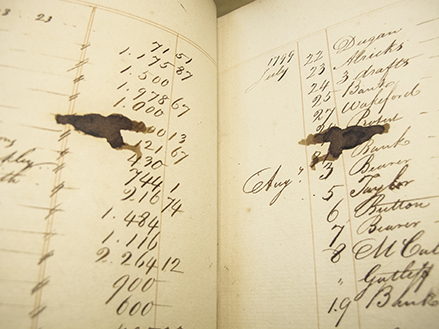
Quickly I considered these “flaws” to be one of the most beautiful elements of the ledgers in the collection, and I looked forward to each new discovery.
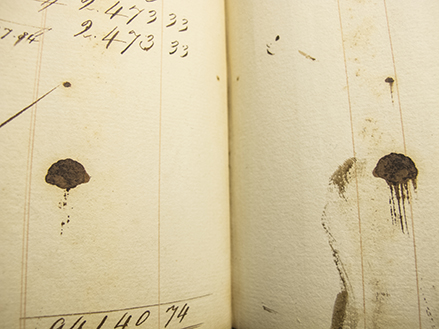
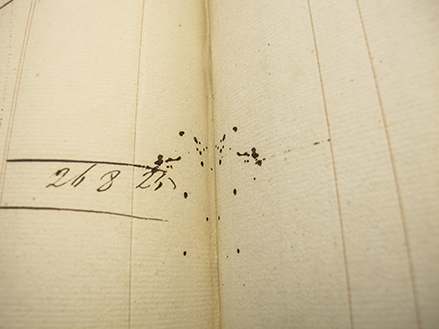
Naturally, the imagery entices one to draw an immediate connection to the image-based test we all know and love that brought ink blots to the forefront of psychiatry – the Rorschach test. However, I must admit that when discovering these dark and strange mirrored images the Rorschach test is the last thing on my mind.
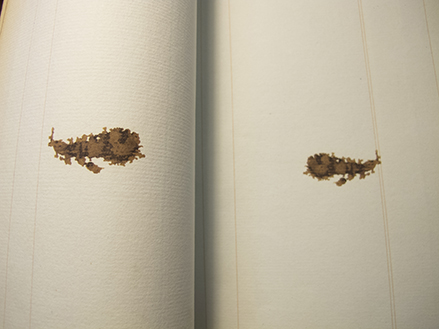
Instead, I wonder about the bank clerk responsible for this ink blot. Was he frustrated with himself for marring what was otherwise a perfect page? Or did he, like me, pause for a moment to witness the beauty of the image growing before him, the dark conquering the light?
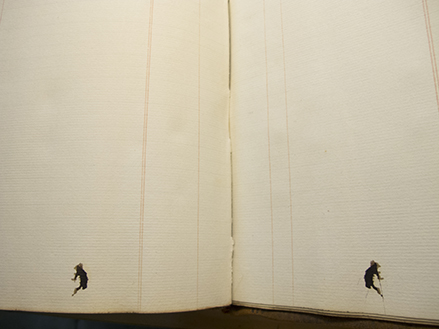
Did he return to the page after closing it, to revel in the mirror image formed on the opposing page? Did he imagine the same characters, animals, and narratives in these shapes as I, two hundred years later?
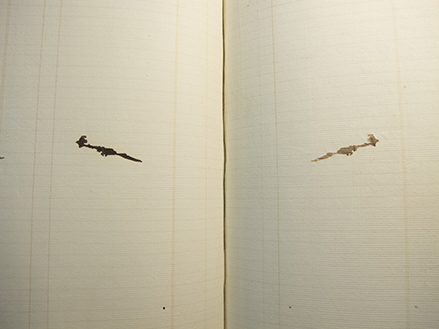
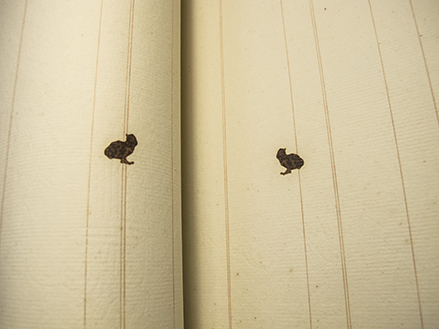
For more images of the collection's ink blots, please visit our Flickr site.

